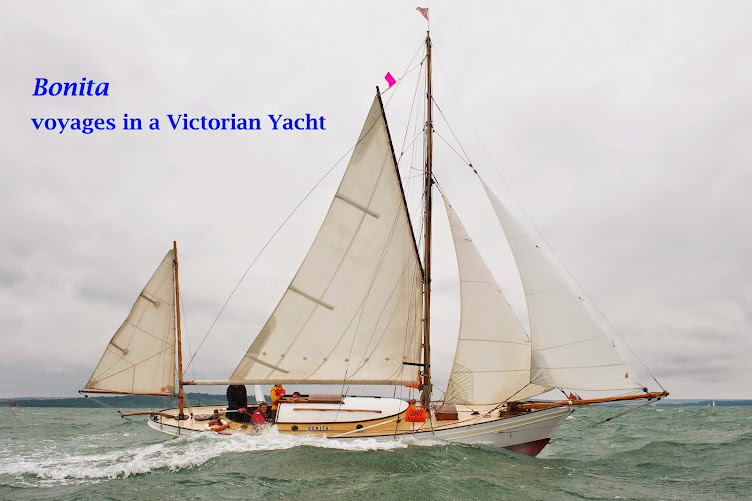Bonita is now snug in her mud berth in Faversham creek, under her winter covers with the mast lifted out and stored ashore.
There is always a bit of work to be done after the wear and tear of a season's sailing. This year most of the wear and tear seems to have happened more or less all at once - during the morning of 10 June when the engine fuel pump failed as we were in heavy surf on the bar at Lauwersoog in the Dutch Frisian islands. We anchored while waiting for the lifeboat and there was a lot of snatching on the chain as Bonita rolled boisterously in the waves. At one point the load on the chain twisted the fitting holding the bow roller, jumped out of the roller, effortlessly removed a length of the teak capping rail and broke the starboard whisker, the stay which holds the bowsprit. Other damage sustained at this time included a lot of cracking of paint around the counter where the planking was disturbed. We will have her lifted out later in the winter to check on her planking below the water line.
The picture shows the bow roller as it appeared after its ill treatment. The roller is mounted on a stainless steel bolt running through the stem: this bolt had become bent so the roller was jammed and would no longer rotate as the chain ran over it. The bolt could not be removed as it had bent in the wood. We calculated that it must have taken a load of several tons to bend this bolt.
There were helpful suggestions from the crew that it could easily be straightened out by
a gentle wallop with a sledgehammer, but I thought this might be a bit unkind to the old boat. So eventually I removed the bolt by cutting it into three pieces.
We had a new bolt made up by T. Norris, the excellent marine engineers. Their works is many miles from the sea, an unexpected island of nautical expertise among the London suburbs. It is also a conveniently short stroll from where I work.



















































